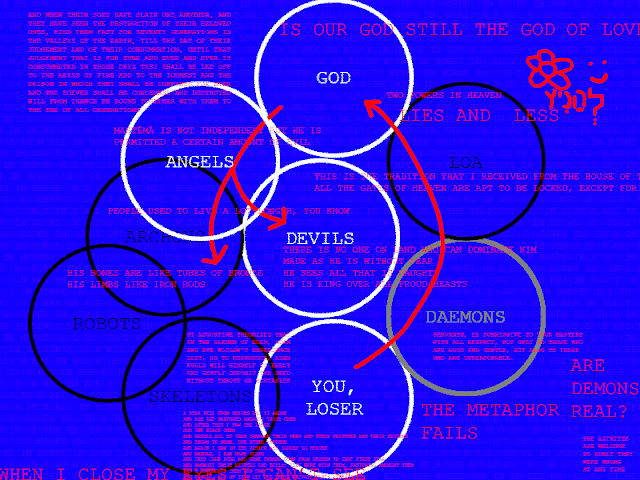anime christian wandering in the ruins of a post-Judgément system-scale megastructure
touchstones: blame!, kenshi, sunless horizon, evangelion, angel;s egge, revelation space, hellgate london, weta workshop concept art for neill blomkamp movies, deprecated lore for a starsector faction that i didn't make, that one homestuckesque browsergame about the sad lost aliens
FOLK
In addition to the regular GROG stuff, three-fifths of the types of folk have an extra stat called HUM (Humanity) to represent how recognizable their biometric data is as, well. This stat is always negative because all the baseline humans are long dead, and is generated by rolling it on some negative d4s directly. If you don't have any negative d4s, you can just roll regular d4s and subtract them from zero.
- Pilot
The most common denizens of the Structure look much like you or I: Mostly hairless; brightly colored; six long, delicate fingers on each hand; plenty of flexible joints; several orifices to make Smells out of. An overloaded adrenal system allows them to react with preternatural speed in crisis scenarios, at the cost of severe stress to the vascular system.
Pilots can take 1d6 damage in order to act immediately, even retroactively interrupting an action taken by someone else. They have minus 2d4 Humanity. - Gammaprole
The primary defining feature of gammaproles, also known as direfolk or shreks, is their size; eight feet tall on average; nearly as wide; cartoonishly blocky proportions. As a gammaprole ages, the dense bony plates which protect their organs push to the surface through their thick, rubbery skin to form keratinous scutes⸻an exceptionally painful process.
Gammaproles have an extra 2 HP per HD on account of their transdermal bone armor, -1 DEX on account of their big, clumsy sausage fingers, and their STR operates on a different scale; they're always stronger than anything that isn't likewise Big or Hydraulic, and can bend gates, lift bars, or bench press a reasonably priced used Japanese automobile without issue. They have minus 3d4 Humanity. - Locust Gibbon
A friendly creature despite its alien bodyplan, the locust gibbon is six-limbed; fiercely chelicerae'd; tufted with shocks of stark white fur which spring forth from the joints of its chitinous exoskeleton. It speaks its own strange, chittering language and is an obligate mechanic who tends to wander⸻perhaps it is no wonder that so few have survived.
Locusts Gibbon have an extra +1 INT on account of their efficient cataloguing of stimuli, -1 STR on account of their inefficient-at-scale musculature, and can ascend and descend sufficiently handhold'd passages as fast as a man can run⸻though they aren't much better at difficult climbs than anyone else. They can't speak⸻which is to say, actually vocalize⸻human languages without a translator, and are not Human. - Ghoul
Were the scientists of the past geniuses, or merely insane? Ghouls, also known as cyberpsykos, are undead; husks of prostheses and neuromuscular overrides animated by inbuilt subintelligent personality models⸻or, if you prefer, haunted by their own ghosts. They are often uncanny to speak to, at least those which have not yet fallen into completely violent incoherence over long centuries in the dark.
Ghouls have an extra -2 CHA on account of their nonpersonhood, and don't need to eat, sleep, breath, or age. They have minus 1d4 Humanity, but roll checks against it with disadvantage on account of their mortally challenged condition. - Skeleton
So called for their fleshlessness and the general shape of their limbs, skeletons are purely artificial beings constructed with enough personality and independence to be readily distinguished by that means⸻even putting aside their uniform shape and size⸻from dumb Robots or universally hostile Archons. Although generations old as a rule, they cannot be coaxed or coerced to speak about the past. Do they truly not know, or do they just have a really, really good reason for not telling?
Skeletons have enough going on mechanically that they're a race-as-class. In order to be a skeleton, you have to take at least the א template before you can multiclass into something else. I can tell you right now that they're not Human.
CLASS
- Methuselah, a sort of wizard.
- Solar, a type of magical girl.
- Fisher-Man, you know, like a fighting-man
- Kenshi, a sword and swordplay enthusiast.
- Stalker, a ranger, arguably.
- Traceur, a thief-acrobat.
